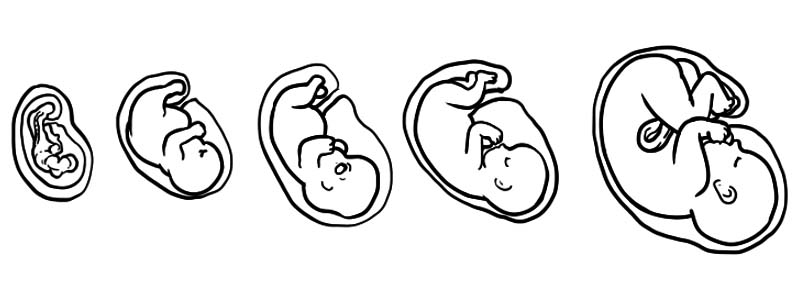FETUS.

A fetus which can also be referred as a foetus refers to the offspring that is unborn of an animal that comes after the development of an embryo. The fetal development stage occurs following embryonic development. Prenatal development in humans, development of the fetus starts from week nine after fertilization and proceeds until birth. This development, prenatal, is a continuum, without a defining feature that distinguishes a fetus from an embryo. A fetus is however characterized by the major body organs presence but they are not fully developed. Some of these body organs are not yet functional while others are not even situated where they are supposed to be.
DEVELOPMENT OF THE FETUS.
The fetal stage begins at the ninth week of fertilization age or week eleven gestational age in humans. During the beginning of this stage, the fetus is approximately 30 millimeters in length and approximately 8 grams of weight. An approximate of half the size of the fetus is made up of the head. A fetuses’ breathing-like movements are important for the purpose of stimulating the development of lungs instead of obtaining oxygen. The brain, heart, hands, feet as well as other organs happen to be present but with minimal operation. The fetuses’ genitalia begin formation in the 9th week and so does the placenta become fully functional. All these events take place between week nine and week sixteen. (Insert image- underdeveloped fetus.)
Between the seventieth and the twenty fifth week, the following happens. At approximately 21 weeks, a nulliparous (a woman whose pregnancy is the first) experiences fetal movements. On the other hand, women who have given birth before start feeling these movements earlier, the twentieth week. Towards the end of the 5th month, it has grown (the fetus) to a length of about 20 cm.
Between the 26th and the 38th week, body fat amount increases rapidly. The lungs are still incompletely developed. There is the formation of the thalamic brain connections. This is responsible for mediating sensory input. The bones are developed fully in this stage but they are still very soft and pliable. There is more abundance of phosphorus, iron and calcium. The fingernails may start to appear. The fetus also possesses breast buds on both sexes. The hair on the head changes and becomes thicker and coarse. On reaching the 38th week, birth is imminent. Birth normally occurs 38 weeks after fertilization. From week 36 to 40, it is when the fetus is said to be full-term fully developed to survive outside the uterus. (Insert image- fully developed fetus.)
The length of the fetus at birth is between 48 to 53 centimeters. There is the limitation of the control of movement at birth.
FACTORS AFFECTING FETAL GROWTH.
Fetal factors. They include the nutrient production, hormone output and the fetus genome. It has also been recorded that male fetuses weigh more than the female fetuses.
Maternal factors. These include, body mass index, emotional stress, nutritional state, toxin exposure mainly from drugs like alcohol, uterine blood flow and maternal weight.
Placental factors. These include: nutrient production, size, microstructure, nutrient utilization, binding proteins and umbilical blood flow.